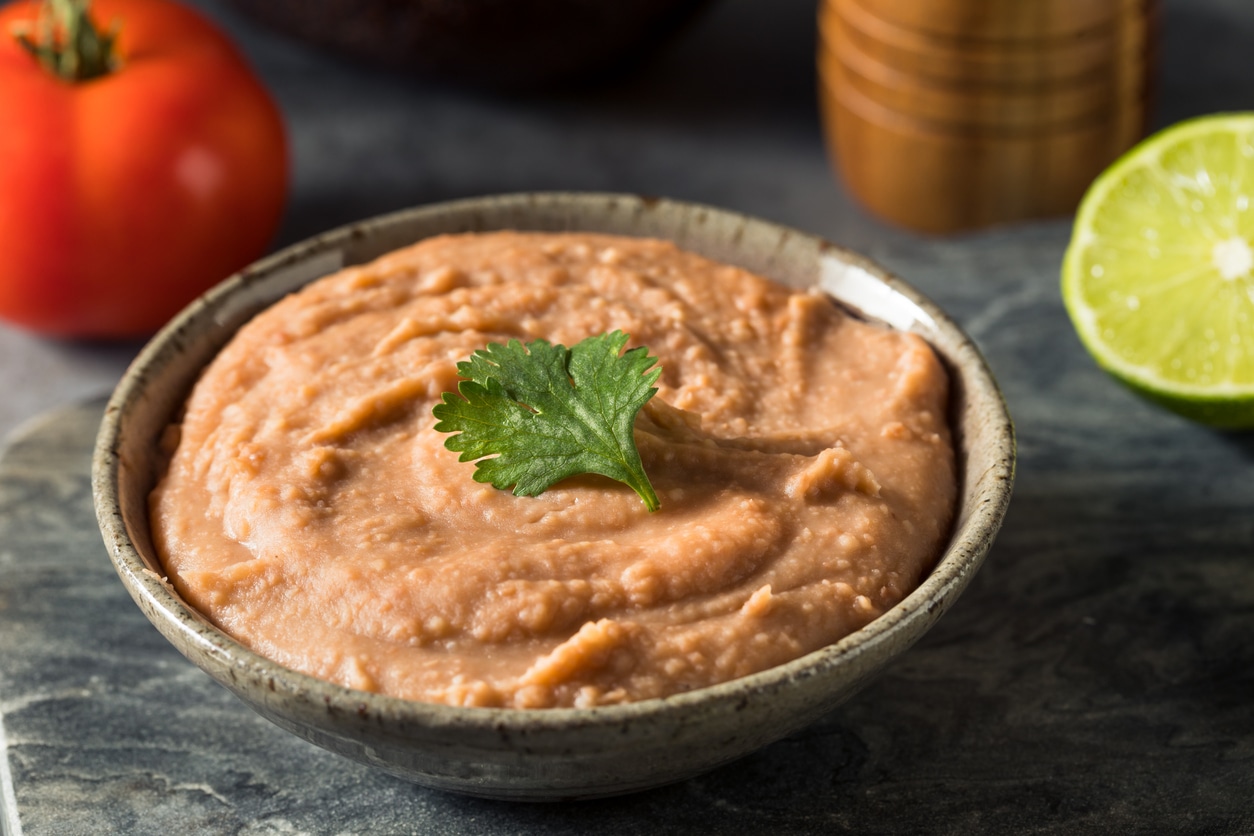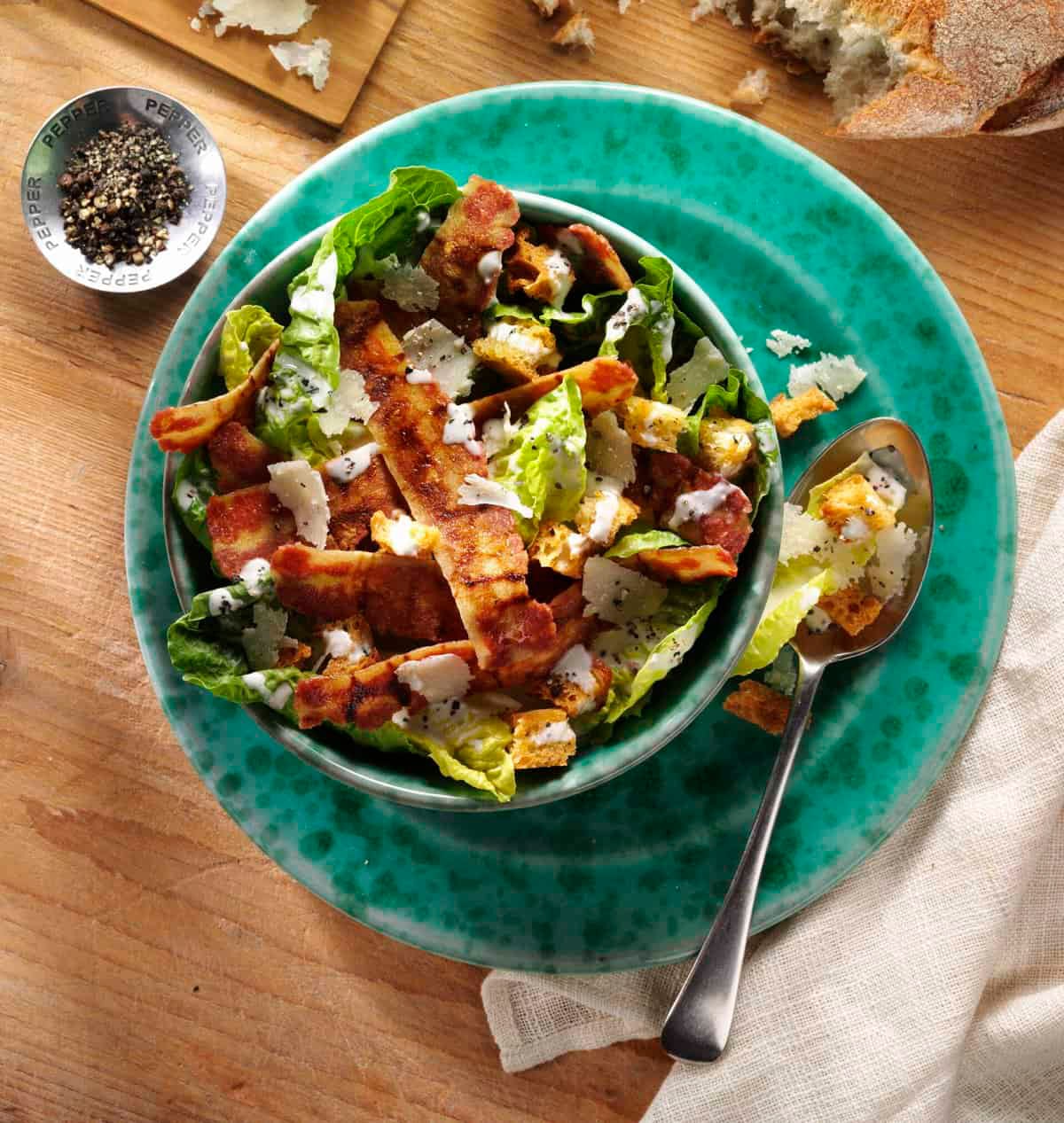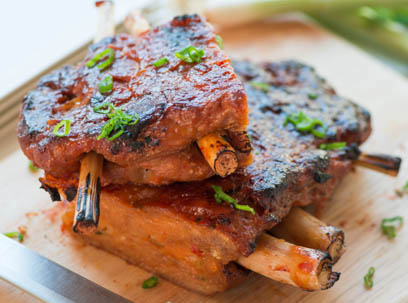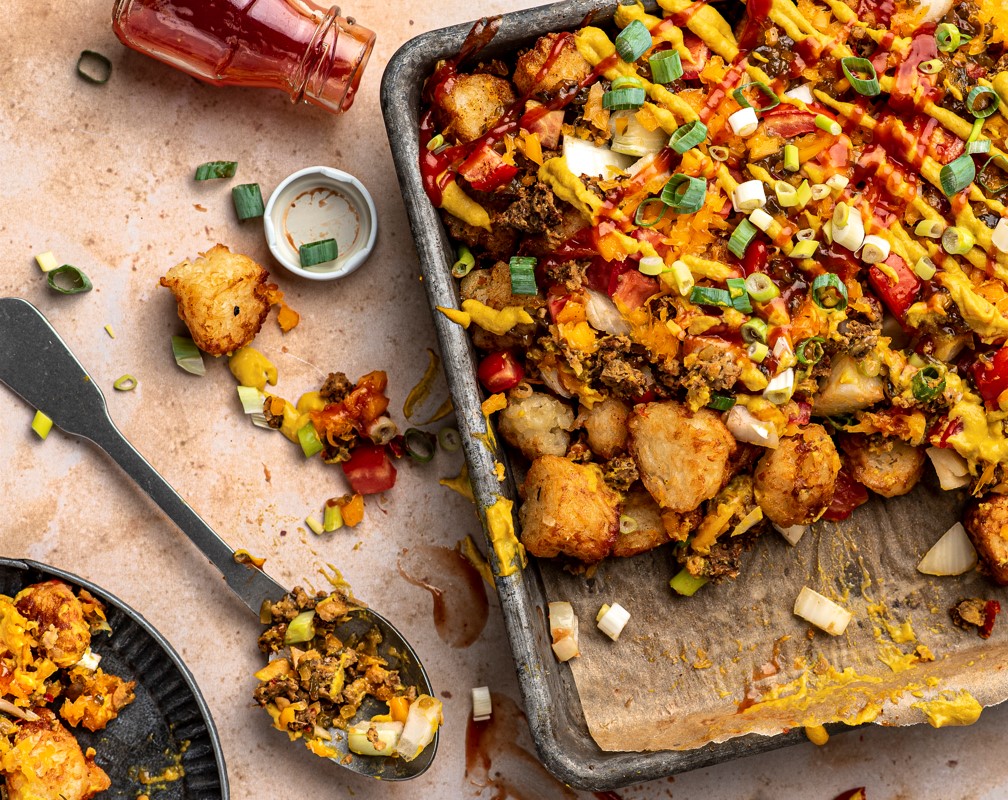If you live in the US, you’ve likely eaten Mexican food (according to Statista, more than 238 million Americans cooked with Mexican ingredients in 2020). And if you’ve eaten Mexican food, whether it’s at home or in a restaurant, you’ve likely come across frijoles refritos, or, as they’re widely known in English, refried beans.
Refried beans originated in northern Mexico; they’re creamy, savory, and a little bit spicy, which makes them a big hit in Tex-Mex cuisine. They’re also easy to find on the shelves (usually in a can) and they’re relatively inexpensive. But if you’ve never tried making your own, let this be your sign to start.
Refried beans made from scratch are packed with flavor and nutrition, and they’re pretty easy to make, too, especially when you’ve got some expert tips at hand. Below, you’ll find advice on how to make the best refried beans ever from top chef and best-selling cookbook author Marye Audet.
Table of Contents
What are refried beans made of?
Refried beans are primarily made from cooked and mashed pinto beans, but you can use whatever bean variety you like. Black beans and kidney beans, for example, can also be used in refried bean recipes.
While the word “refried” implies that the beans are fried twice, this is not the case. “This belief actually stems from a common misunderstanding of the Spanish language,” according to food writer Stacie Adams
Vladimir Mironov
“Both English and Spanish share the prefix ‘re,’ as illustrated by the words refritos and refried. However, the prefix does not mean the same thing in English as it does in Spanish,” Adams explains for The Daily Meal. “To English speakers, ‘re’ is typically understood to mean again. As a result, most assume that refried beans are fried two separate times during the cooking process. In Spanish, the prefix actually translates to very.”
So to summarize: refried beans are not fried twice. They are fried just once but for a long time. They are “very” fried.
Are refried beans healthy?
Beans, in general, are extremely healthy. They are packed with fiber, protein, vitamins, minerals, and antioxidants (you can find our detailed guide to their benefits here), all of which help to support gut health, digestive health, heart health, and more. Because beans are, of course, the main ingredient in refried beans, the dish has all of these benefits, too. However, there are some things to consider.
Refried beans are often cooked in lard, for example, which is a type of animal fat that is high in saturated fat, and eating too much is associated with raised cholesterol, which is a risk factor for heart disease. However, refried beans can also be cooked in olive oil, which is lower in saturated fat, and has even been linked with supporting brain and heart health.
 bhofack2
bhofack2
5 expert tips for making the best refried beans
The process of making refried beans is generally simple: simmer the beans with olive oil, onions, garlic, and salt, before mashing them up to get that signature creamy texture. But there are a few simple tips and tricks you can employ to get that perfect consistency and flavor every time. Before you get cooking, check out the advice below from Audet, who runs the popular recipe blog Restless Chipotle and is a New York Times bestselling cookbook author.
1 Pre-soak the beans to soften them
“Pinto beans are my go-to for that classic refried bean taste, but black beans are also a fantastic choice if you’re feeling adventurous,” says Audet. “Soak them overnight to save yourself some cooking time (and keep your kitchen cooler in the process).”
2 Use plenty of oil
Audet notes that while traditional refried beans are soaked in lard, you can also get that “rich, authentic” taste from plant-based options, like olive oil, for example. “Olive oil works like a charm,” she says. “Heat your fat of choice, toss in some chopped onions, and cook them until they’re golden and sweet. Trust me, this step makes all the difference.”
3 Don’t rush the process
“Once soaked, cook those beans low and slow with some garlic and maybe a bay leaf if you’re feeling fancy,” advises Audet. “Don’t rush it—good beans take time. And hey, don’t salt them until they’re tender! Salt too early, and you’ll end up with tough beans, and nobody wants that.”
4 Mash them up and be *generous* with the seasoning
“Now comes the fun part—mashing the beans. You can use a potato masher, a fork, or even the back of a spoon. Add a bit of the bean-cooking liquid if things get too thick. Personally, I like my beans with some texture, but you do you,” says Audet. “And don’t skimp on the seasoning! A good hit of salt, pepper, and cumin is a great start, but you can spice things up with chili powder, jalapeños, or even a splash of hot sauce.”
5 Don’t skip the toppings
“Just before serving, squeeze in some fresh lime juice to brighten everything up. It’s the little things that count,” notes Audet. She adds that you can also jazz them up with a little cheese (find our guide to plant-based cheese here!), a dollop of sour cream, or “some fresh cilantro if you’re feeling extra.”
“Serve them as a side, stuff them in a burrito, or just grab a bag of chips and dig in,” she says. “However you eat them, they’re going to be amazing.”







